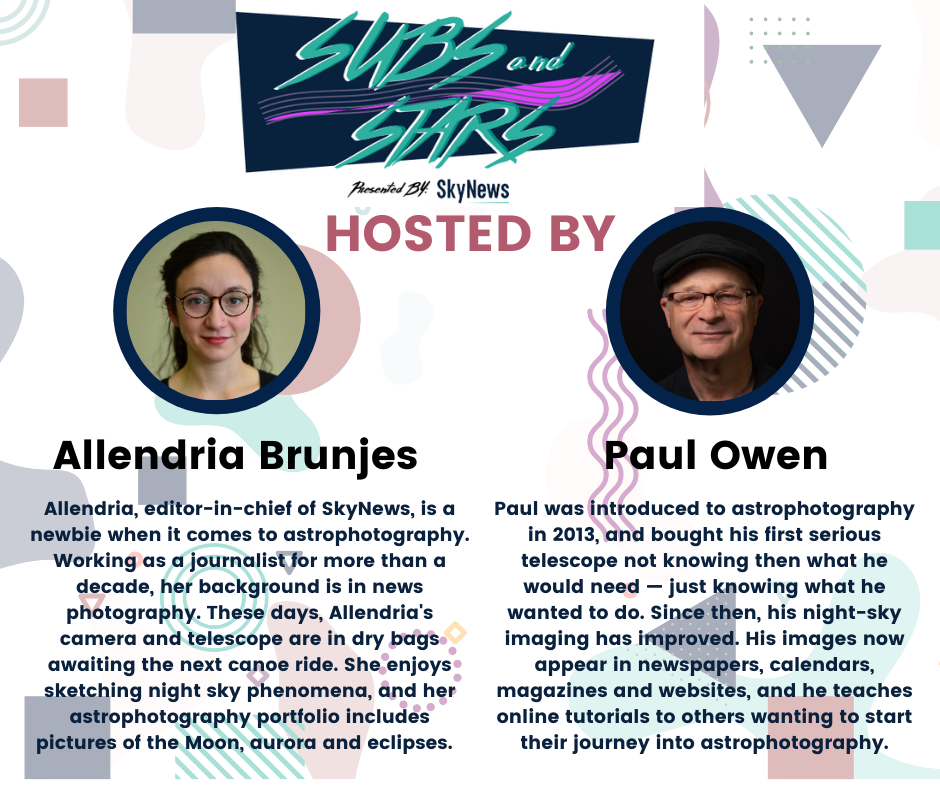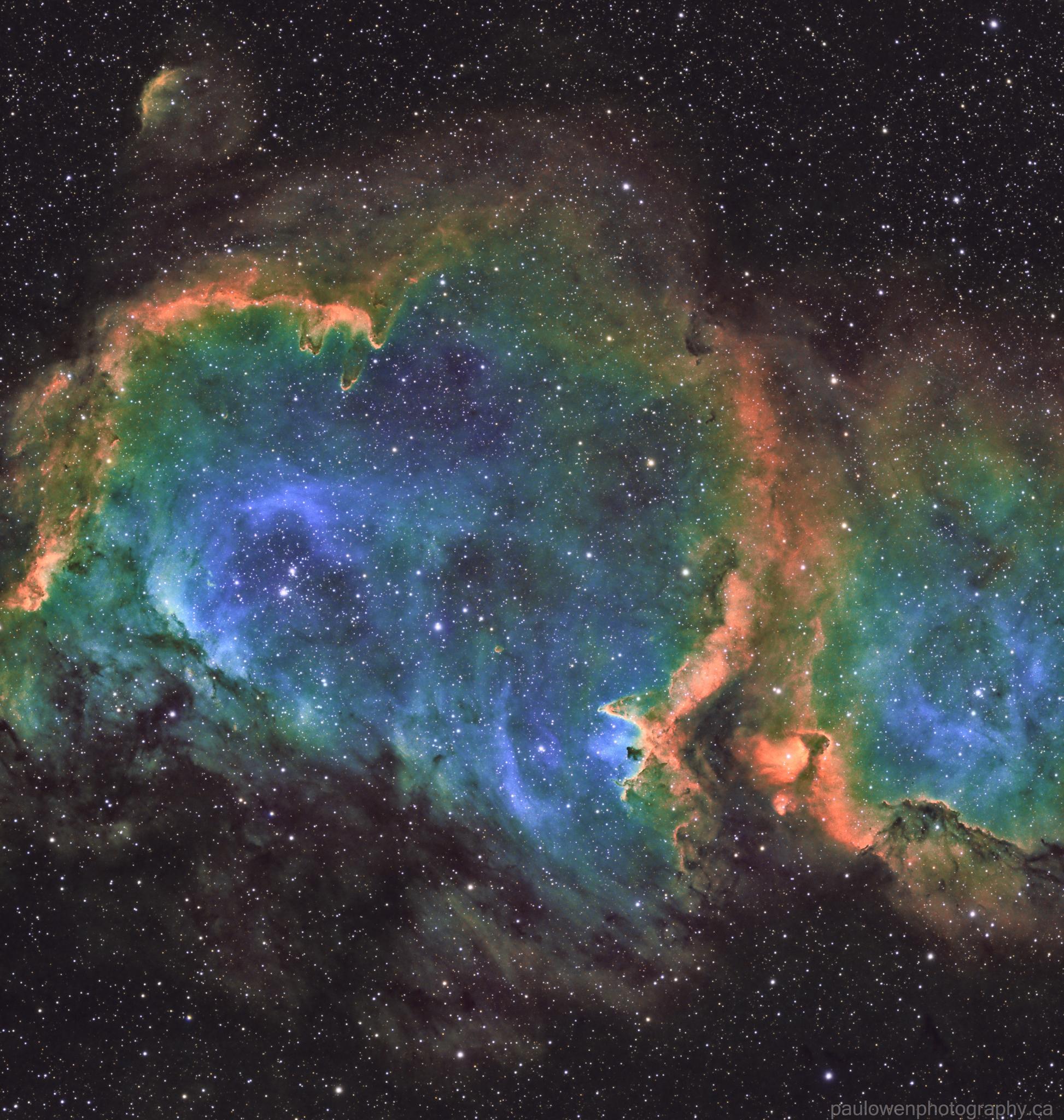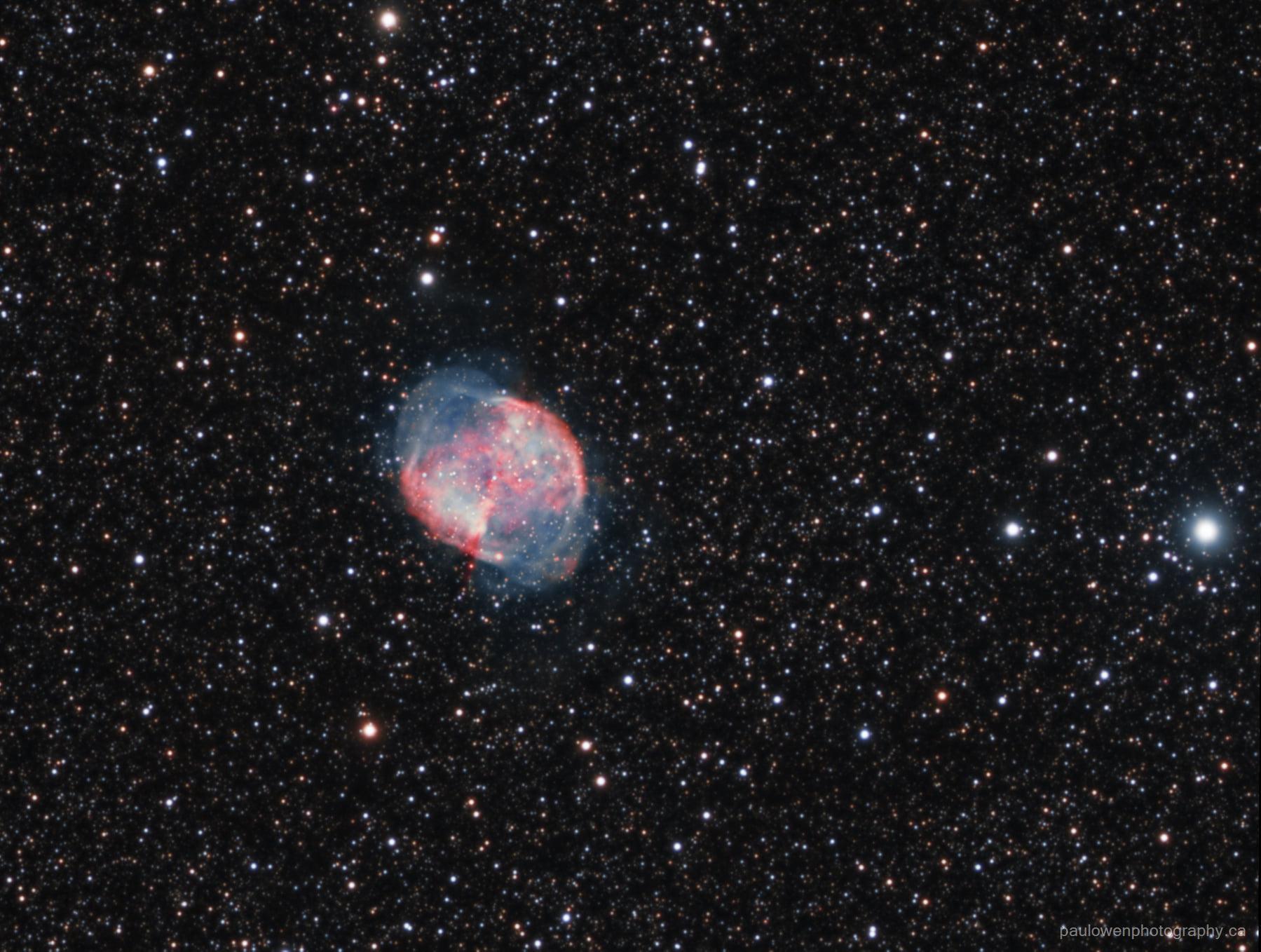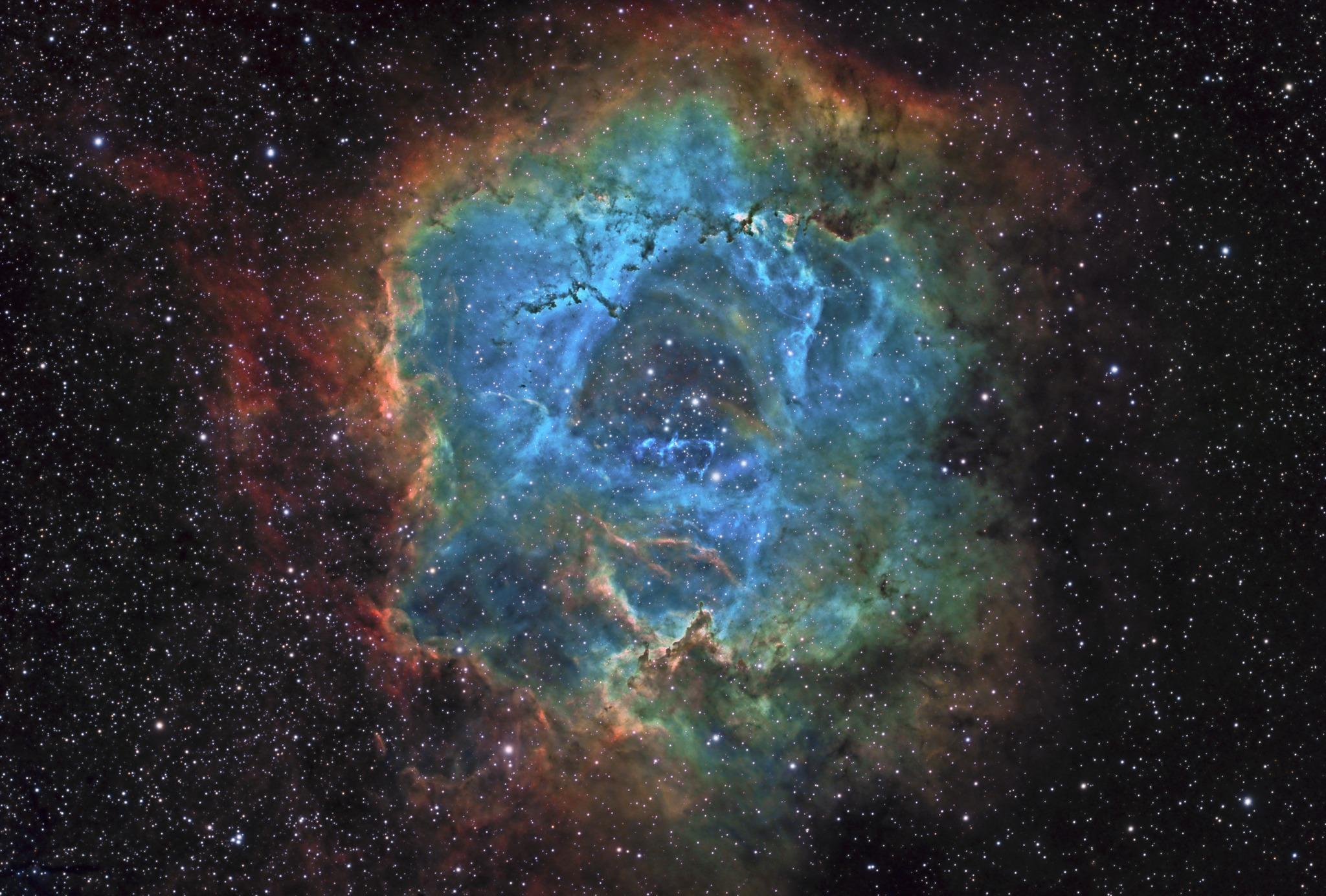【Starry Story】Paul Owen (Canada)
【Starry Story】Paul Owen (Canada)
My Story
I would like to share with you my story of how I came to enjoy the wonderful world of astrophotography.
My Name is Paul Owen, Iam a now 61 year old child of the night sky. I do most of my astro imaging form my backyard in beautiful Hampton New Brunswick Canada. I am a retired business owner who spends most of my time involved in some form of photography both teaching and learning.
I started my astro-imaging journey back in 2013 taking typical moon and Milky Way shots and eventually into deep sky astrophotography. I started out with a DSLR and a 5" Newtonian telescope mounted on a manual Orion GEM. I wasn't long learning that I needed a motorized tracking system to be able to take longer exposures and get some data to be able to work with.
I joined my local astronomy club in 2013 and over time became part of our star party committe, wihch today I chair, and soon realized how much better I could capture images in darker skies. I was able to travel all around our province and experience all the dark sky locations that were located in our national parks and soon developed my favourite sites.


In particular Mt. Carleton has the darkest skies in the province being bortle I and the scenery that it offers with it's two mountain peaks over a huge body of water delivers a landscape that any astrophotographer would leap at for the nigthscape imaging opportunity.
My place and Gear
When I am at home I use my roll off roof observatory to capture the images I produce. My sky is a bortle class 3 to 4 so when imaging broadband when using OSC camers I require a little filtration. The equipment I am using at the present time has taken a while to settle into. For many years I tried to many combinations of scopes, camers, mountes and of course softward and after all this time here is what my current set up is.
My imaging scope is a Stellarvue 105mm triplet at F5, My camera is an ASI2600mm mono C-MOS camera. I am using ZWOI 7 position 2" electronic filter wheel and Optolong 36mm unmounted fliters. They are Lum, Red, Green, Blue, Ha(7nm), SII(6.5nm), OIII(6.5nm). My focuser is a motorized Moonlite stepper motor system. The power and data are controlled by a Pegasus Ultimate Power Box. All of this rides on a Skywatcher EQ6R GEM which is mounted on a steel pier.
The sofward I am using is Sequence Generator Pro for data acquisition, PHD2 for guiding and PixInsight for data pre and post processing.

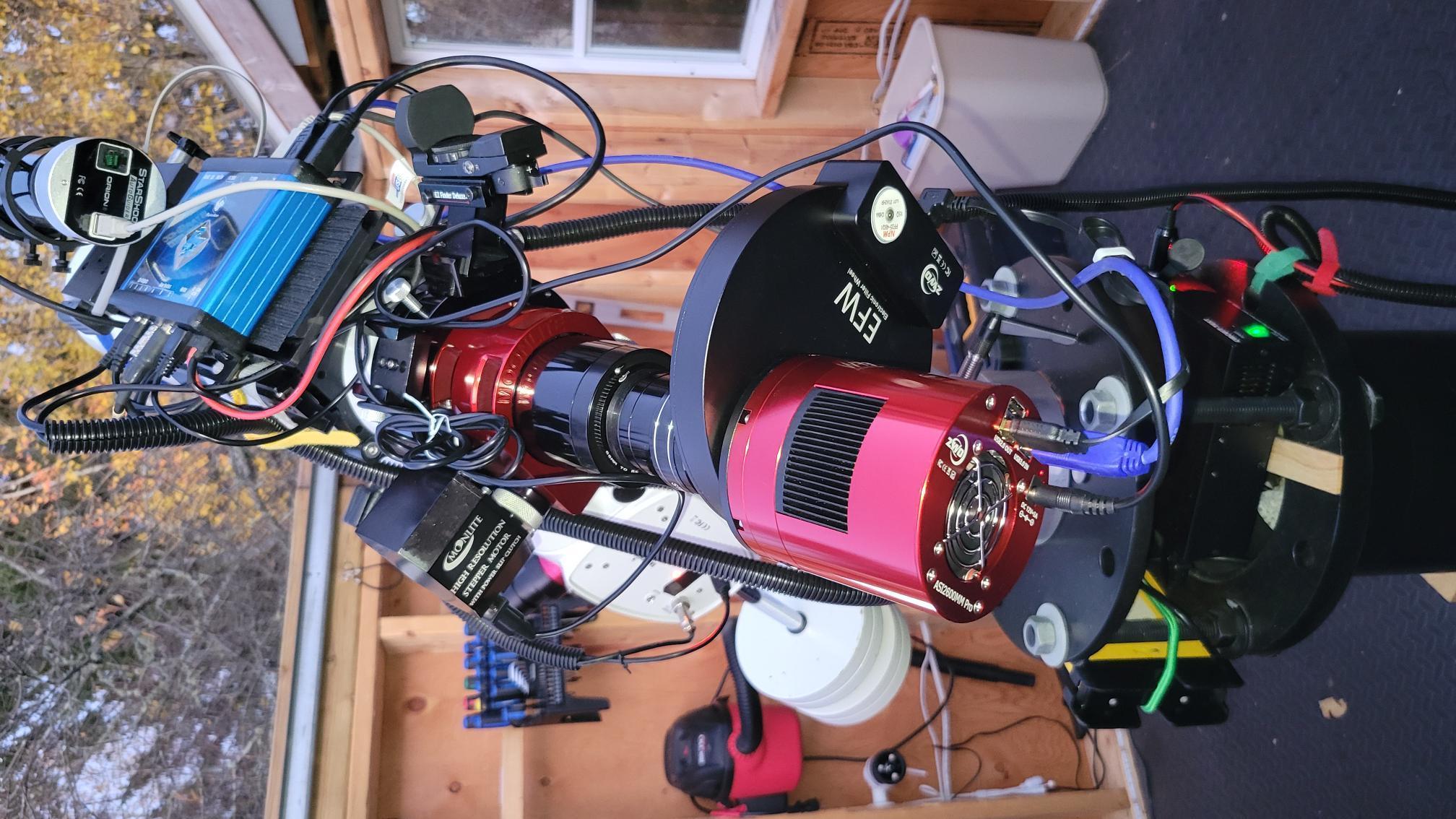
Experience with Filters
I wanted to talk about my experience with filters. In my early days starting out I was using DSLR's and eventually I got into modified cameras and filters at the time. I had no idea what filters were for and which one I needed so I bought 5 right off the hop that were drop in filters for my modified camers. Well in not time after using them and not very successfully, I reallized I had to be better at choosing fitlers and didn't get anymore until my second dedicated astro cameras. The first was a QHY10 OSC CCD camera. It was a great intro into astro cameras and the learning curve wasn't as steep as I thought. I had to hearn to use outboard softward to run it and gain and offsets were an unknown to me so there were some challenges. It was my second camera that I started using filters with and the Camera was an ASI294m cpro OSC CMOS camera. The first filter I bought was and STC Duo-narrowband filter in OIII and Ha. It worked well for my and I was able to start working on blending rgb with narrowband iamges and there the door swung open. The next filter I got was the Optolong L-Pro for broadband work. I absolutely loved that filters as the images were looking so much better in broadband given my sky conditions. I ended up using a filter drawer to be able to switch to the filters and that made it so much simpler for doing data runs without re-setting everything to change a filter.
The Western Veil (NGC6960) in the constellation Cygnus.
This is the remnants of an exploded star from some 8000 yrs ago. This is about one third of the size of the complext this portion resides in. Take with Skywatcher 120mm refractor through a one shot color C-MOS astro camera while filtered though a L-Pro broadband filter.
Total acquistion time 4.75 hrs. Stacked and processed in PixInsight and color touches in Photoshop cc.
Starting out in my early years in this hobby, my images where very typical smears of color and noisy backgrounds but to me, at the time, these were the most exciting images I had ever taken and wasn't long sharing them on social media sites. This is where the obsession took hold and over a long period of time my acquisition skills improved along with my processing capabilities.
Over time my images have appeared in magazines, newspapers, websites and in astronomy calendars. I am currently working with SkyNews magazine on an 8 month astro-image processing workshop series that is broadcase on YouTube called Subs and Stars. This is where we take data from the RASC Robotic Telescope located in Californial and go throught the complete process of how to use the data sets and softward to get the most from your images and here is where many newcomers can get their start into data processing. This is one of my highlights in this astro-imaging jouney as I love to show others that it's not one great bit thing in astrophotography but a bunche of little victories each time you overcome a step in the process.
Also I co-host on YouTube the Sunday Night Astronomy Show each Sunday night at 8:00 AST. This is an educational program that talks all things astronomy and we are very interactive with our audience. I have just started a new YouTube channel for the beginning astrophotographer where throught my own experiences I guide and recommend equipment and methods to try and keep the beginning stages of astrophotography fun and simple, that channel is called Universal Time with Paul Owen.
If I could give any advice to the newcomer it would be, enjoy every minute of the process. There is no time limit on anything as the sky will always be there. Don't be competitive with your work and use other peoples work to be inspirational and a guiding post for you to follow. Yes there will be frustrating times as sometimes things will go wrong as in any hobby but these are the times where you will develop your experience and your're ability to troubleshoot situations.
There are so many things of beauty in and around us every day but at night, when skies are clear and you can spend some time under the stars you will feel a connection like no other and when you can share that with others in photos there is no feeling like that on earth...
My first ever attempt at the Soul nebula in the Hubble Palette...
The Heart Nebula
IC 1805, Sharpless 2-190, is some 7500 light years away from Earth and is located in the Perseus Arm of the Galaxy in the constellation Cassiopeia. It was discovered by William Hershel on 3 November 1787. It is an emission nebula showing glowing ionized hydrogen gas and darker dust lanes. This image was taken over 10Hrs of integration using a Mono camera and narrow band filters which creates this remarkable color palette.
The Andromeda Galaxy, M31, M32, M110
The Andromeda Galaxy also known as Messier 31, M31, or NGC 224 and originally the Andromeda Nebula, is a barred spiral galaxy approximately 2.5 million light-years from Earth and the nearest large galaxy to the Milky Way. The galaxy's name stems from the area of Earth's sky in which it appears, the constellation of Andromeda.

M27
The Dumbbell Nebula is a planetary nebula in the constellation Vulpecula, at a distance of about 1360 light-years. It was the first such nebula to be discovered, by Charles Messier in 1764. 100 lights@ 180 sec, 50 flats, 50 darks, Total integration time 5hrs, "Low resolution" and "75% moon illumination"
Skywatcher Equinox 120mm refractor, ASI 291MCpro OSC camera, Optolong L-Pro broadband filter
Captured: Sequence Generator Pro. Processed: PixInsight
The Pleiades, also known as The Seven Sisters, Messier 45, and other names by different cultures, is an asterism and an open star cluster containing middle-aged, hot B-type stars in the north-west of the constellation Taurus.
TECH: 8 hrs integration , 2hrs Blue 2hrs green, 2hrs Lum
Scope: Stellarvue STV 105mm triplet OTA
Camera: ASI2600mm pro mono
Mount: SkyWatcher EQ6R Pro GEM
Guide camera: Orion Star Shoot 50mm
Guide software: PHD2
Filters: Optolong LRGB 36mm
Stacked and processed in PixInsight Dec 23rd/24th
The Rosette Nebula in Monoceros
The Rosette Nebula is an H II region located near on end of a giant molecular cloud in the Monoceros region of the Milky Way Galaxy. The open cluster NGC 2244 is closely associated with the nebulosity, the stars of the cluster having been formed from the nebula's matte. The narrow band colors are mapped to SHO: Sulfur II, Hydrogen Alpha and Oxygen III
2hrs on each band
Scope Stellarvue SVT105 @F5.6
Camera: ASI2600mm
Filters: Optolong 36mm SII(6.5nm), Ha(7nm) OIII(6.5nm)
Guide scope:SSAG
Mount: Skywatcher EQ6R pro
6hrs total integration.
Bortle class 4 skies
Melotte 15 is an open cluster of stars located in the center of the Heart Nebula (IC1805), in the constellation Cassiopeia. There are stellar clouds, which are dominated by ionized hydrogen gas. Fish Head Nebula, also known as the Fish Nebula and Northern Bear Nebula, is a emission nebula located in the constellation Cassiopeia.
Tech: 8hrs acquisition
Scope: Stellarvue SVT105mm @F5.6
Camera: ASI2600mm cooled to -15 degrees
Filters: Optolong 36mm Ha(7nm), OIII(6.5nm), SII(6.5nm)
Mount: Skywatcher EQ6R
Guide Camera: Star Shoot Auto Guider
Acquistion software: Sequence Generator Pro.
Procession software: PixInsight and Photoshop, Stacked and calibrated in PixInsight.
The beauty you see on the side of the road sometimes makes you stop and capture it...

ENJOY~





